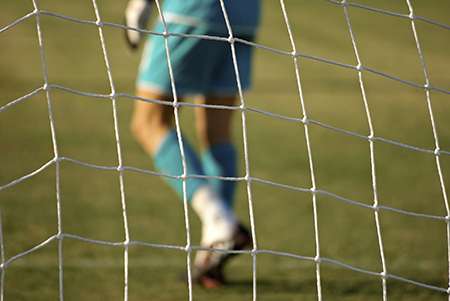UEFA's 'home-grown player' rule delivers only 'modest improvement'

UEFA's 'Home-Grown Player' (HGP) rule resulted in modest improvements in the competitive balance of teams, but not at a level significant enough to outweigh the restrictions it imposes on the movement of players, according to a study by the University of Liverpool.
Introduced in 2005, the rule requires clubs competing in the Champions League and Europa League to have a minimum number of "home-grown players" in their squads. These are players who, regardless of their nationality, have been trained by their club, or by another club in the national association, for at least three years between the age of 15 and 21.
The initial requirement was four locally trained players, but this was escalated each year up to the 2008/09 season, where a minimum of eight locally trained players was required within each squad of 25.
Promote and protect quality training
The purpose of the rule's introduction is to support the promotion and protection of quality training for young footballers in the EU and increase the competitive balance between clubs, but it potentially clashes with EU law on workers' freedom of movement.
And while the study found a significant increase in the number of both 'home-grown' and under-21 players, there was no data to prove this occurred as a direct result of the rule. Interviews with football clubs and stakeholders around Europe suggested changes in management structure, club tradition, domestic league rules, financial position and UEFA Financial Fair Play regulations may have been more influential.
The rule was found to have had very little effect on youth player training and development throughout the EU. There was a greater positive impact on competitive balance but this was found to be 'very modest', with little evidence to suggest it impacts the final stages of Champions League or Europa League competition
Report co-author, Dr Geoff Pearson, from the University's Management School, said: "The neutrality or very limited positive effect of the rule, in terms of improving competitive balance and the training and development of young EU players, must be balanced against the impact the rule has on restricting a player's freedom of movement. There is very limited evidence to suggest this restriction is currently manifestly restrictive, but it remains intrinsically liable to restrict free movement.
"It is the view of the research team that the very modest benefits of the rule are likely to be achieved in a more substantial manner by the adoption of alternative, less restrictive means, particularly those not carrying discriminatory effects."
Alternative regulatory measures
The report recommends that a further study is carried out in three years to assess the outcome of discussions between UEFA and its stakeholders on potential alternative regulatory measures , before it can be categorically established whether the proportionality of the rule has been made out.
More information: ec.europa.eu/sport/news/201308 … tudy-hgp-rule_en.htm
Provided by University of Liverpool
















